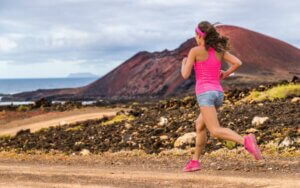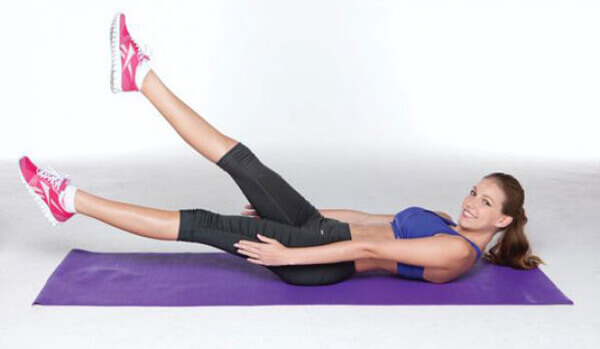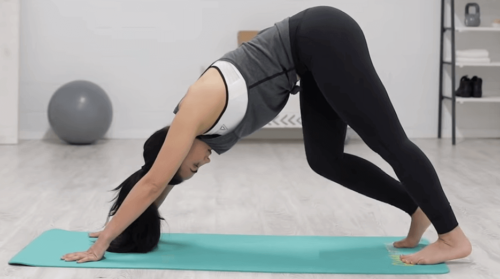Some Tips to Help You Start Running

Running is the action of moving quickly with long steps and in such a way that you lift one foot off the ground before supporting the other. Running has become very popular lately, as it’s fun and has multiple benefits. For example, it boosts your metabolism, aids weight loss, improves cardiovascular health, and burns calories. The people who practice it state that it hooked them right away, both physically and mentally. To help you start running, below, we’ll detail a few guidelines and tips you should follow:
Get a checkup
Before you start any type of exercise, it’s advisable to get a medical checkup to know how you’re doing and how much you can work out, and with what intensity.
If you decide not to get a checkup, it’s a good idea to start running progressively, without pushing yourself, to avoid possible injuries.

One of the tips to help you start running: choose the right clothing
You must always choose comfortable clothes that don’t restrict blood circulation. As for footwear, it’s a good idea to have a look at your old sneakers’ wear and tear to see where you step the most.
If you aren’t very clear on this, it’s a good idea to opt for “neutral” sneakers that you can later add insoles to.
Warm-up before running
Warming up is essential to avoid possible injuries. It’s important to take both your muscles and joints into account. Here’s a good warm-up routine you can do before you start running:
- Lunges. Take long strides while keeping your front knee elevated. Lower your body by dropping your back knee to the floor. Keep your torso straight and contract your abdominal muscles.

- Scissor abs. Raise one leg laterally to one side and then to the other to pass it in front of the other leg. Do ten reps on each side.

- Heel skipping. Stand up and walk forward with an exaggerated backward leg movement so that your heel hits the buttocks area. Do ten reps on each side.

Pike stretch. Stand with your hands and feet flat on the floor and your hips elevated. Place your right foot behind your left ankle. With your legs straight, press down on the heel of your left foot. Then, release the pressure. Repeat ten times on each side.

- Raise flexion. Raise your left leg with your knee bent, so that it points outward. Try to hit the inside of your left foot with your right hand without leaning forward. Do ten reps on each side.

- Goose step. While keeping your back and knees straight, elevate your legs forward and flex your toes. Increase the difficulty by adding a jumping motion. Do ten reps on each side.
If you can’t run in the morning, go out in the afternoon. Remember to do this a long time before dinner and bedtime.

It’s best to run in the morning
Experts say that it’s much better to go for a run in the morning, since this exercise activates your body and it’s a good way to start the day. Thus, it’s best to avoid running at night, as it may lead to restless sleep.
If you can’t run in the morning, do so in the afternoon, preferably a long time before dinner and bedtime.
Your diet

Before you start running, it’s best to eat something light, such as a piece of fruit or yogurt, as it’ll give you energy but you won’t feel heavy.
When you get home from running, it’s best to eat carbohydrates to recover the energy you expended while running and proteins to help regenerate your body.
Another of the tips to help you start running: stretching
It’s best to stretch after exercising. Also, it’s advisable to stretch after you finish, since the muscle isn’t so tired and damaged and this will reduce the risk of breaking microfibrils.
If you stop to stretch while you’re running, you should only do it if you feel too tired to continue. And if you stretch before running, don’t do so for more than six seconds so you don’t overstretch the ligaments and tendons.
Running is the action of moving quickly with long steps and in such a way that you lift one foot off the ground before supporting the other. Running has become very popular lately, as it’s fun and has multiple benefits. For example, it boosts your metabolism, aids weight loss, improves cardiovascular health, and burns calories. The people who practice it state that it hooked them right away, both physically and mentally. To help you start running, below, we’ll detail a few guidelines and tips you should follow:
Get a checkup
Before you start any type of exercise, it’s advisable to get a medical checkup to know how you’re doing and how much you can work out, and with what intensity.
If you decide not to get a checkup, it’s a good idea to start running progressively, without pushing yourself, to avoid possible injuries.

One of the tips to help you start running: choose the right clothing
You must always choose comfortable clothes that don’t restrict blood circulation. As for footwear, it’s a good idea to have a look at your old sneakers’ wear and tear to see where you step the most.
If you aren’t very clear on this, it’s a good idea to opt for “neutral” sneakers that you can later add insoles to.
Warm-up before running
Warming up is essential to avoid possible injuries. It’s important to take both your muscles and joints into account. Here’s a good warm-up routine you can do before you start running:
- Lunges. Take long strides while keeping your front knee elevated. Lower your body by dropping your back knee to the floor. Keep your torso straight and contract your abdominal muscles.

- Scissor abs. Raise one leg laterally to one side and then to the other to pass it in front of the other leg. Do ten reps on each side.

- Heel skipping. Stand up and walk forward with an exaggerated backward leg movement so that your heel hits the buttocks area. Do ten reps on each side.

Pike stretch. Stand with your hands and feet flat on the floor and your hips elevated. Place your right foot behind your left ankle. With your legs straight, press down on the heel of your left foot. Then, release the pressure. Repeat ten times on each side.

- Raise flexion. Raise your left leg with your knee bent, so that it points outward. Try to hit the inside of your left foot with your right hand without leaning forward. Do ten reps on each side.

- Goose step. While keeping your back and knees straight, elevate your legs forward and flex your toes. Increase the difficulty by adding a jumping motion. Do ten reps on each side.
If you can’t run in the morning, go out in the afternoon. Remember to do this a long time before dinner and bedtime.

It’s best to run in the morning
Experts say that it’s much better to go for a run in the morning, since this exercise activates your body and it’s a good way to start the day. Thus, it’s best to avoid running at night, as it may lead to restless sleep.
If you can’t run in the morning, do so in the afternoon, preferably a long time before dinner and bedtime.
Your diet

Before you start running, it’s best to eat something light, such as a piece of fruit or yogurt, as it’ll give you energy but you won’t feel heavy.
When you get home from running, it’s best to eat carbohydrates to recover the energy you expended while running and proteins to help regenerate your body.
Another of the tips to help you start running: stretching
It’s best to stretch after exercising. Also, it’s advisable to stretch after you finish, since the muscle isn’t so tired and damaged and this will reduce the risk of breaking microfibrils.
If you stop to stretch while you’re running, you should only do it if you feel too tired to continue. And if you stretch before running, don’t do so for more than six seconds so you don’t overstretch the ligaments and tendons.
This text is provided for informational purposes only and does not replace consultation with a professional. If in doubt, consult your specialist.








